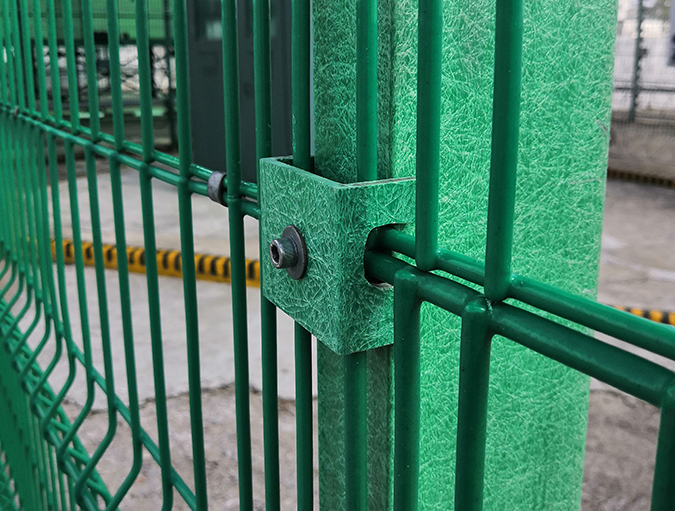Fiberglass composite poles - modern and effective solution for panel fencing of all types. Fiberglass composite poles can be utilized for establishing perimeters for facilities of various purposes - from civil to specially protected; can be a part of engineering and signalling fencings, along with being used as the basic element of non-lethal electroshock impact systems. Fiberglass composite poles outperform traditional metal poles and offer optimal solution in all climatic zones, including Far North or tropical regions.
For the production of profiles frmo composite materials, the pultrusoi n method is employed, where resin-impregnated glass materials are pulled through a heated die. The die is thermosetting resin polymerization process, resulting in a fully formed profile. The length of the product is limited only by the needs of the Customer and the transportability. Fiberglass composite poles have a number of advantages over the most common steel fence poles:
COMPARATIVE CHARACTERISTICS
OF STEEL AND FIBERGLASS POLES
|
Characteristics |
Fiberglass poles |
Steel poles |
| Density, g/cm3 | 1,9 | 7,8 |
|
Breaking point (Ultimate stress at stretch/bending), MPa |
400 | 370 |
| Yield point, MPa | Not yeld | 245 |
| Modulus of elasticity, MPa | 40 000 | 210 000 |
|
Linear thermal deformation coeff., 5-10 °С, °С-1 |
5-9 | 13-15 |
| Heat conduction coeff., W/(m*К) | 0,35 | 46 |
| Corrosive resistance | Non-corrosiveи | Corrosive, requires anticorrosive coating |
| Elecroconductivity | Diaelectric | Conductive |
| Magnetic properties | Diamagnetic | Ferromagnetic |
| Shape memory effect | Recovers after deformation | Does not recover after deformation |

BENEFITS:
-
increasing speed and reducing labor costs during installation due to low weight, absence of bolted and adhesive joints, exclusion of welding works;
-
exclusion of costs for anticorrosion and anti-fire protection (both initial and operative);
-
Does not require development of additional documentation, causing increase in the construction cost;
-
reducing the foundation installation costs by lesser construction weight;
-
possibility of application in agresstive environments;
-
possibility of application in wide range of operative temperatures, from -100 to +150°С, low thermal conductivity;
-
non-conducting electricity;
-
possibility of painting in any color, both on the surface of the material and in the mass;
-
durability of material (more than 25 years).
FENCING MODELS WITH FIBERGLASS COMPOSITE POLES
|
OPLOT-SK |
PLOT-SK |
| Basic model of mesh fencing, consisting of poles, panels and fixture elements. |
Basic fencing equipped with mounted hood and helical razor wire with diameter of 960 mm. |